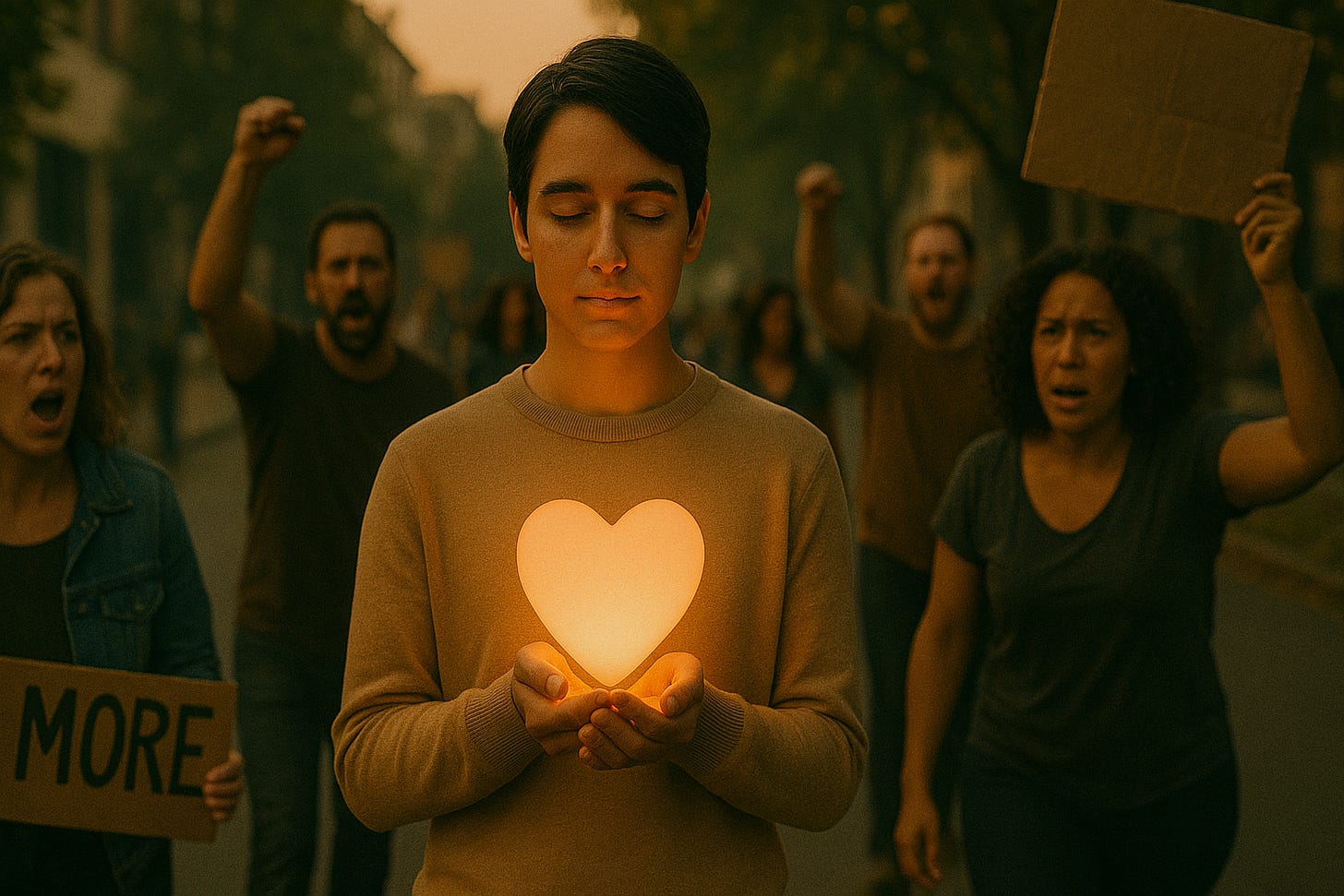What If We're The Problem?
Our "solutions" to a divided world are part of the disease we can't see.
Everywhere you look, the news is filled with discord. We see it in the political debates, the social media arguments, and the daily headlines. The calls for change are everywhere: "We need more empathy!" "We have to end the violence!" "Let's get back to civil discourse!"
These all sound great, don't they? They would be great, if only we knew how to get there.
The problem is, the problems we are focusing on are actually just symptoms. And the solutions we offer are part of the disease.
We pass laws, hold marches, and post impassioned pleas online, all aimed at convincing "the other side" to change. We protest violence, sometimes with more violence, all because we assume the problem is out there, with them.
But what if the real problem isn't out there at all?
What if the widespread discord we feel in our country and our world isn't about political policies, social issues, or what's happening on the news? What if it's based on a much deeper, more fundamental misunderstanding?
The real disease is the pervasive belief that our circumstances, situations, and other people are responsible for our feelings. We operate from the idea that other people’s actions and words "cause" us to feel a certain way. This is the "outside-in" misunderstanding.
Here's why this is so critical:
1. We’re Treating the Symptoms, Not the Disease
Think about it. Calls for more empathy or civil discourse are aimed at the symptoms of a deeper issue. When we believe others are the cause of our feelings, our attempts at "empathy" often become attempts to get others to behave in a way that makes us feel better. It’s a superficial fix that leaves the root cause untouched. As long as we believe our feelings are coming from the outside, the symptoms of division will just keep reappearing in new ways.
2. Our Solutions Are Targeted at “Them”
This is a natural consequence of the outside-in misunderstanding. If I truly believe your words are making me angry, then the only logical solution is for you to change. This creates a cycle of blame. Each side is convinced of its own righteousness and demands that the other side fix the problem. This is a dead end—a perfect recipe for the political and social gridlock we see every day.
3. The Misunderstanding Is the Source of Both the Problem and the "Solutions"
This is the most subtle and powerful point. The same misunderstanding that leads to anger and division also fuels our proposed "solutions." A law intended to promote more civil behavior, for instance, often comes from the belief that "those people" need to be forced to behave better. The very act of creating the law is rooted in the same "outside-in" thinking it's meant to solve. We’re trying to use the problem to solve the problem.
So, what’s the real solution?
It isn't another protest, another election, or another policy. It is most certainly not another angry post on social media. The only thing that will genuinely shift the discord is an inside-out awakening.
We have to stop looking for solutions in the world outside of us and start looking within. This is not about passive acceptance; it's about active introspection. True, lasting change happens when we each learn to examine our own experience, rather than trying to fix everyone else's.
We each have to realize that our feelings never come from our circumstances, situations, or other people—they only ever come from our thinking.
So let me ask you directly: Who or what did you blame your feelings on today? The president? A family member? That email from your boss? Last week’s news event that everyone is talking about? Until we are willing to look at that question and own the answer, every solution we propose will be part of the very problem we're trying to solve.
Let me know in the comments: What was the first thing that came to mind when I asked who or what you blamed your feelings on today?



